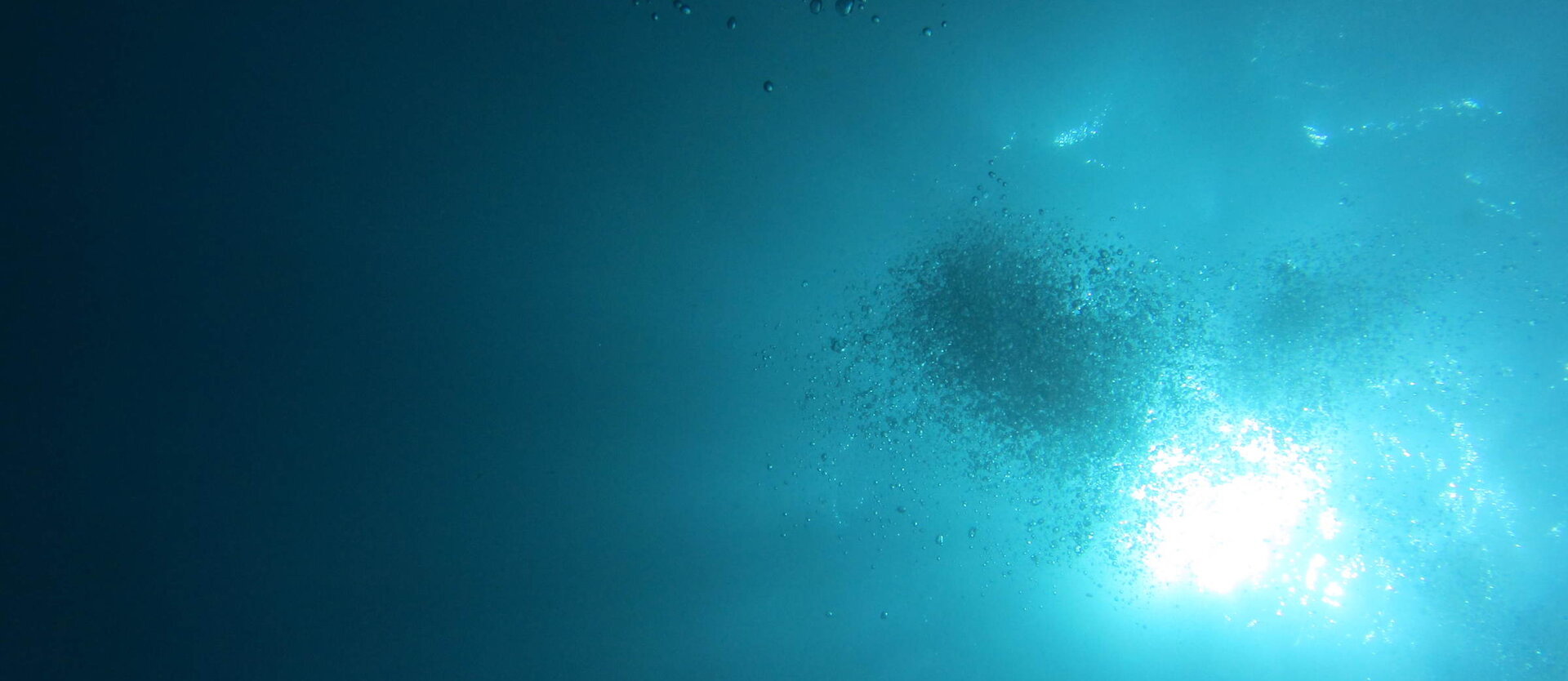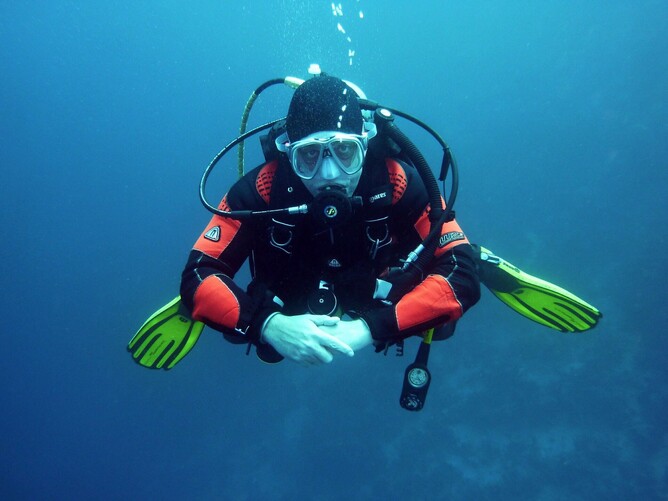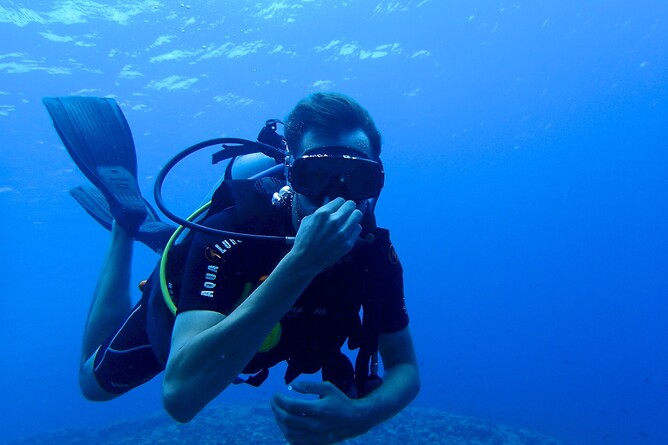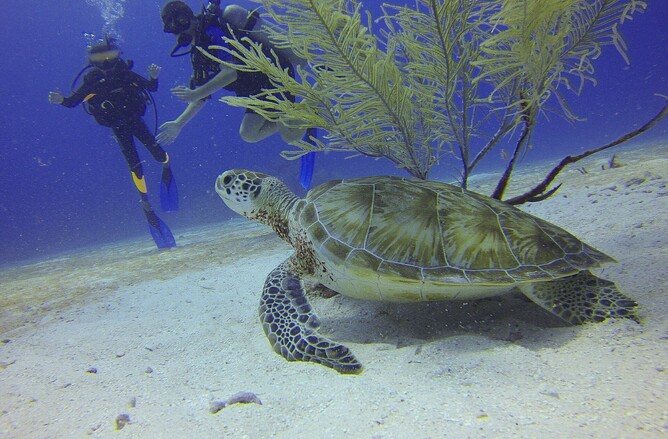What is a safety stop?
Put simply, a safety stop is a pause that a scuba diver makes during their return to the surface after a dive.
The pause, or stop, is typically conducted at a depth of 5 metres (18 feet) for between three and five minutes - just before the diver surfaces.
In recreational sport diving, most agencies are aligned in saying that you should complete a safety stop on any dive that is deeper than 18m/60ft; 18m/60ft being the generally accepted depth at which a dive becomes considered ‘deep’.
That said, performing a safety stop on every dive, regardless of depth, is extremely good practice and should be encouraged. Scuba diving is about diving well within, not at, limits.
Manufacturers of dive computers usually program their products to automatically remind a diver to perform a safety stop on any dive that is conducted below a depth of 10 metres. The computer will also monitor depth and count down from three minutes for the time that the diver spends within a suitable no stop depth range.
The purpose of a safety stop is to help maximise the opportunity for the nitrogen that has been absorbed by a diver during their time under water to be slowly and safely released.
It will not eliminate all nitrogen so the ascent from the safety stop to the surface should still be conducted slowly.
Although the term ‘no decompression diving’ has been coined over the years it is something of a misnomer. It should more accurately be referred to as ‘no decompression stop diving’ as every diver absorbs nitrogen, and therefore needs to decompress, on every dive.
What is meant by the term ‘no decompression diving’ is that recreational sport divers limit their exposure to nitrogen absorption (basically the time and depth of their dives) to mean that they can proceed directly to the surface.
There is no need for them to manage their nitrogen exposure through decompression stops.
Contrary to what many think, there is no way in which you can eliminate the risk of decompression sickness if you scuba dive. Performing a safety stop, however, is an excellent way of reducing this risk.
Our advice is always to perform a safety stop on every dive if possible.
Is a safety stop mandatory?
In a word, no. There is no obligation or requirement to perform a safety stop - it is optional.
The key difference between recreational sport diving and recreational technical diving is that in sport diving divers can ascend directly to the surface without the need to stop (provided they ascend slowly and do not exceed their maximum ascent rate).
It may be best practice and is certainly highly recommended but there is no obligation to perform one.
Indeed there are circumstances where you should not consider completing a safety stop as we cover in our blog 'Can I ignore my safety stop when diving?'.
So you should always plan and intend to complete a stop at 5m/18ft but be prepared to ignore it if circumstances dictate.
If you are diving in good, safe conditions then performing a safety stop should absolutely be the norm.
So I just have to hang around for 3 minutes do I?
Well, yes - you can if you want - or not!
When shore diving we always look to complete the dive by drifting to the exit point at a depth of 5m/18ft - that way the safety stop is completed as part of the dive when we're still looking at the fish and searching for critters.
The shallows can be a great place to find marine life that is often missed - it was during a safety stop that we first encountered a seahorse. So make the safety stop part of the dive if possible.
If you’re diving from a boat then naturally this is less of an option, but it is a great opportunity to practice skills.
Practicing buoyancy control and hovering is an obvious choice but the safety stop also lends itself brilliantly to skills such as mask removal and replacement and alternative air source drills - naturally make sure your buddy is aware beforehand.
You can also use the opportunity to practice sending your DSMB to the surface but we recommend that the boat captain is aware just so that they understand it’s a training drill.
Enjoy this article and want to know more about Dive Bunnies?
Are you a new or novice diver and want to get more involved with Dive Bunnies? Why not join our Facebook Group and make some new friends - we would love to hear from you!




